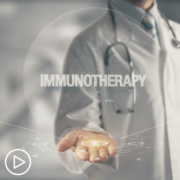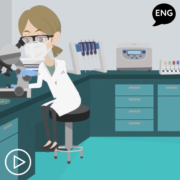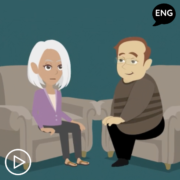Questions to Ask About Your Advanced Non-Melanoma Skin Cancer Treatment Plan
Questions to Ask About Your Advanced Non-Melanoma Skin Cancer Treatment Plan from Patient Empowerment Network on Vimeo.
Are there key questions that advanced non-melanoma skin cancer patients should ask about their treatment plan? Dr. Anna Pavlick provides expert advice, emphasizing the importance of discussing treatment milestones and exploring alternative options if needed.
Dr. Anna Pavlick is a medical oncologist and the founding Director of the Cutaneous Oncology Program at Weill Cornell Medicine and NewYork-Presbyterian. Learn more about Dr. Pavlick.
See More from Evolve Non-Melanoma Skin Cancer
Related Resources

|

How Does Immunotherapy Treat Advanced Non-Melanoma Skin Cancer? |

|
Transcript:
Katherine:
What questions should patients be asking about their proposed treatment plan?
Dr. Pavlick:
I think it’s important to obviously know everything that you can about the medicine that you’re going to be given. What are the side effects? How does it work? Is it pills? Is it IV? Are you injecting something into me? In addition to that, I think patients also need to ask, “Well, how are you going to know that it’s working? When do we do scans? When do I get reevaluated?” Because again, not everybody is going to respond to every therapy. If we did, listen, I would retire and open up a dog reserve. But what is the milestone?
How many cycles or how long before we determine this is working or this isn’t working? And many times, because patients have visible lesions on their skin, it’s not really hard to know whether something is working or not because you’re going to watch it get better or you’re going to see it get worse.
And many times, when patients ask me that, my answer is we have to see as we go along. But if we see it getting better, we keep going until it’s gone or it just stops shrinking. And then we talk about maybe removing it. On the contrary, if we give patients medicine and after let’s say two treatments, this spot on their skin has increased in size and looks like it’s growing, well, maybe we want to stop and reconsider what we’re doing and change to something different.






